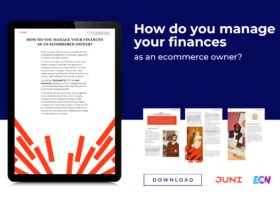The benefits of taking your online retailing business to the next level and selling outside of your domestic audience are obvious. You greatly expand your pool of potential customers and you can exploit the scarcity of your goods in other geographies and improve your margins.
But trading cross-border also brings complexities to your e-commerce operation. You’ll need to consider dealing in foreign languages and multiple currencies, duties and tariffs as well as deal with cultural differences too.
None of these challenges are insurmountable. In recent years, dozens of companies have emerged that can grease the wheels of cross border trade. In this article we will be examining foreign currency exchange and how optimising how you deal with currency exchange can give a boost to your bottom line.
It really doesn’t matter where you’re located or who you’re trading with, a specialist currency exchange firm can help you whether you’re based in the Europe, North America or Asia. An online retailer based anywhere in the world can benefit from engaging with an expert.
This article isn’t just about how to solve a problem, it’s focused on helping you optimise your business practices so that you can better utilise currency exchange.
In this article we will explore:
- The huge opportunity for selling online to international customers
- The benefits of engaging an international payments specialist for currency exchange
- The different ways an international payments specialist can boost your profitability
We’ll look at how you can actually prosper from fluctuating exchange rates as you sell to customers overseas. So, read on and find out how you can benefit from engaging with a foreign currency specialist.
It’s easy to understand that by opening up your e-commerce to a global market will increase the number of buyers you reach. But you may be surprised by how big the international opportunity is. In this section we will examine the size of the addressable market for e-commerce sellers across the globe and where the significant growth areas are.
Where are the digital buyers?
In terms of individuals out there who buy online, even just opening up your sales to a few other territories can multiply the pool of potential buyers. For instance, in 2016 North America will see 197.6 million people shop online and if you open up to markets in Western Europe then you’ll have access to a further 205.6 million Shoppers.
Digital Buyers 2016 (millions):

E-commerce sales worldwide by region, 2016 (billions) E-commerce Sales Growth, 2016. (Percentage increase).
But the biggest number of online shoppers out there is located in the Asia-Pacific region where 812.2 million people will shop online in 2016. That is more than North America and Western Europe combined. It’s a huge opportunity.
How much are they spending?
The total global estimated e-commerce spend in 2016 is expected to be $2,050.36 billion. More than half of that is spent in Asia-Pacific ($1.152.21 billion). North America and Western Europe make up much of the rest of the spend at $415 and $351 million respectively.
While it’s easy to target these developed giants, it could be potentially more interesting to focus on emerging e-commerce markets. Globally e-commerce will grow 22.7% in 2016. Europe and the USA are comparatively mature and don’t enjoy the same pace of growth as newer more emerging markets. Whilst e-commerce in Asia-Pacific will grow faster than the average in 2016 at 31.3%, and Western Europe will only grow 10%.
*All numbers from marketer.com Worldwide E-commerce Report 2016
Marketplaces: An easy way to get your foot in the door
Marketplaces can be an excellent first step into some of these foreign markets: by selling on an already established site, you remove a lot of the risks that are linked to pushing your e-commerce cross-border. Using the marketplace means you can leverage their visibility and site notoriety while simultaneously testing the potential of your products overseas. However, marketplaces come with their own challenges, the biggest of which being the potential currency exchange.
Amazon and similar marketplace platforms aren’t much better than the banks when it comes to currency exchange rates. They normally don’t offer the most attractive rates (typically 2.5% worse than a specialist) and frequently charge a commission fee. It can turn out that you’re paying a hefty chunk of your sales to Amazon. Add 3.5% to the Amazon selling fee (that depends on category but can be as much as 30%) and if you’re also using Fulfilment By Amazon (FBA) you may be paying a significant chunk of your sale price to the marketplace.
As you start selling overseas, inevitably you’ll start receiving payments in foreign currencies. The default, if you’re selling on marketplaces, is for them to deal with those payments for you. With Amazon, they’ll process the payments and send you the money. In the case of eBay, it will be handled by PayPal. The problem is that neither will offer you the best rates or a specialist service. Another option would be to employ the services of a currency exchange specialist that could mitigate these high costs.
What Can a Currency Exchange Specialist offer for my E-Commerce?
While currency exchange can be an issue (especially with fluctuating exchange rates between political changes), a currency exchange specialist can help stabilise your profit margins by giving you a sure return on your exchanges. They also provide several services that will benefit your cross-border e-commerce:
Unique local accounts
You don’t need a bank account in each and every territory you trade with because a handful of exchange companies can give you unique (to you) account numbers for each country you do business in. You then instruct your marketplace to pay funds to these account details and, when received, they pass it to your local bank account at an optimised exchange rate to the banks. This means that you get more money than you would using a bank or marketplace rate. Not needing multiple overseas bank accounts (which are sometimes very tricky to open) means you also avoid a great deal of hassle and administration when moving to a new market.
Forward contracts
One of the enemies of business is uncertainty. The currency exchange markets are always ebbing and flowing so it can be very useful to know what exchange rate you can enjoy in the future. This is where forward contracts can come in handy.
You can choose to lock in today’s exchange rate for a future date, up to a year ahead, so you know exactly what you’re going to get. And you can schedule your future disbursements too so you’ll know when and how much money is coming your way.
Embrace Limit orders
If you aren’t in a rush to repatriate your funds and get your hands on your cash you can use a limit order to maximise your returns. This is where you set a target exchange rate for the funds held overseas in your account. As the specialist watches the currency market for you, once the target rate is reached, you will be alerted and asked to confirm that you’re happy to make the exchange and get your hands on the money. E-commerce businesses are often run on tight margins so every little bit extra is good news for the bottom line.
Supplier payments
If you’re sourcing inventory from overseas and importing it before selling it online, then you could also benefit from a specialist currency exchange service. They can help you process your payments to your suppliers overseas to ensure a superior exchange rate. That means that you pay for goods at a preferable rate and give your profit margins a boost.
Foreign exchange cannot always take precedence during the day to day running of your e-commerce business, however by making a few simple, small changes to the way your funds are managed can make at huge difference to your bottom line and ultimately improve you profit margins. Currency exchange shouldn’t be so scary that it makes you hesitate to take your e-commerce globally, and by having a currency exchange partner, it doesn’t have to be.
What has been your experience in foreign currency exchanges? Tell us below or tweet us!
Image credit : Shiva





